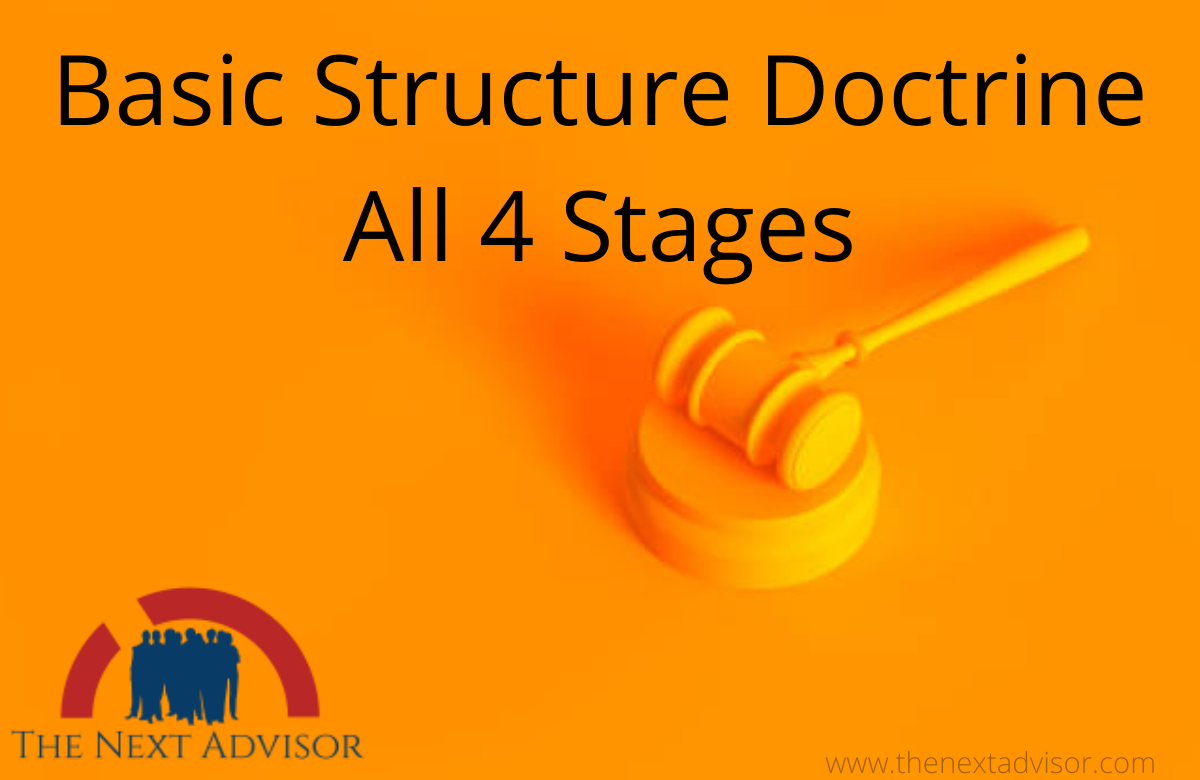The basic structure doctrine is defined in different cases. The four main stages where the doctrine of basic structure could be understood easily. So Basic Structure Doctrine All 4 stages are explained here with important case laws. Let us see the basic structure doctrine of all 4 stages.
Introduction of the basic structure doctrine of all 4 stages
Verbatim Article 368 -“Power of the parliament to amend the constitution”, here the word ‘amend’ gives birth to the doctrine of basic structure. The word amend itself expresses that the parliament can amend the constitution but cannot change its ideals and philosophy or briefly say- the structure.
• So the doctrine of basic structure says that: The parliament’s unlimited power to amend the constitution is subject to only one restriction i.e. it should not dilute or violate the basic structure of the constitution.
Evolution of Doctrine of Basic Structure
• The doctrine of basic structure though is not exactly defined but through its contents which have been provided by the judicature clarifies a scope defining the frame or the structure of the constitution. From time to time basic structure is enhanced with some new contents and hence the Supreme Court is yet to define the exact basic structure of the constitution.
• So, to simplify that I divided the Basic Structure doctrine into 4 Stages.
First stage – Sankari Prasad’s judgment ending with I.C. Golaknath’s judgment
• Initially judiciary was of the view that the amendment power of the parliament is unrestrictable because it can amend any part of the constitution even also Article-368 which provides the power to amend to the parliament. But in 1967, Golak Nath V State of Punjab, the Supreme Court adopted a new vision to see the powers of parliament that it cannot amend the part III of the constitution i.e. Fundamental rights, and thus awarded fundamental rights a “Transcendental Position”
• NOTE-The “Basic features” principle was first expounded in 1953, by Justice J.R. Mudholkar in his dissent, in the case of Sajjan Singh v. the State of Rajasthan.
The Second Stage Starts with Post Golakhnath and ends with Kesavanada Bharti Judgment
• In 1973, Keshavananda Bharti V State of Kerala gave birth to the landmark judgment which pronounced that the parliaments cannot alter or disturb the basic structure of the constitution.
• It was held that however the parliament has unfettered power to amend the constitution but it cannot disturb the basic structure or fundamental features of the constitution as it is only the power of amendment and not of re-writing the constitution.
The Third stage – Starting with Post Keshavananda Bharti’s case and ending with Indira Gandhi’s case ·
Although the doctrine of basic structure was given in the Keshavananda Bharti case but it got widespread acceptance and legitimacy due subsequent cases and judgments.
• The main evolution of this doctrine started at the emergency period imposed by then powerful PM Indira Gandhi. 39th Amendment was passed by the government in order to suppress her prosecution which also extracted the elections of Prime Minister from the purview of judicial review.
• However, in the case of Indira Nehru Gandhi v. Raj Narain, the 39th amendment act was quashed down with the help of doctrine of basic structure.
The Fourth Stage – Judgment like Minerva Mill’s case and Vaman Rao’s case
• In the Minerva Mills case, the Supreme Court provided key clarifications on the interpretation of the basic structure doctrine.
• Under the limited power of parliament to amend the constitution, two important factors were added:-
1. To keep harmony and balance between the rights and directive principles.
2. Judicial review case.
Conclusion
• We find that basic structure as an idea has developed over years since its origin in the 1970s, with each passing year there has been to an ever-increasing extent right being incorporated into the basic structure of the Constitution. The basic structure as we see today is consequently a finish of long periods of legal supervision.

























